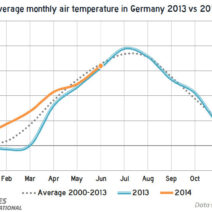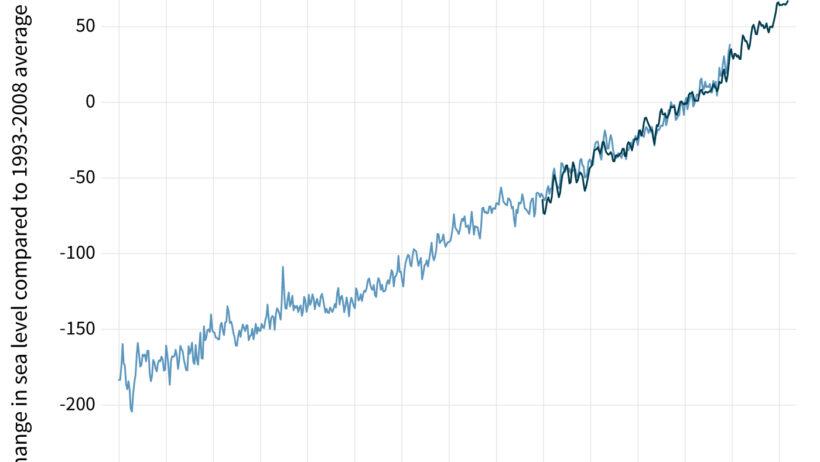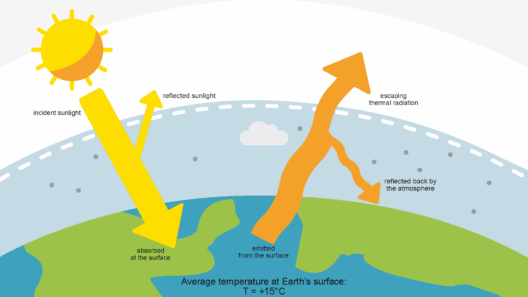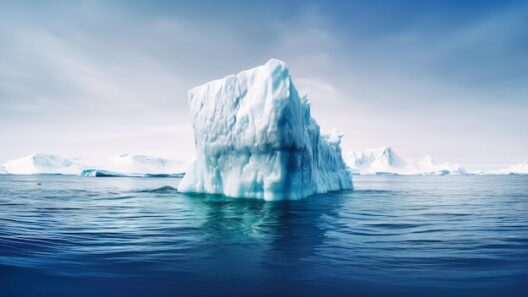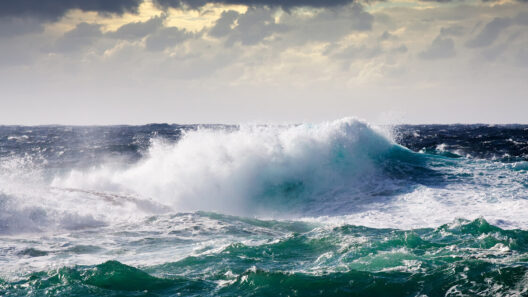The intricate dance between climate change and rising sea levels undeniably marks a pivotal moment in our environmental narrative. As global temperatures ascend, the ramifications weave through ecosystems, economies, and communities worldwide. Understanding how climate change aggravates sea-level rise invites a fundamental shift in perspective. It propels us toward recognizing the urgency and necessity for action.
At the heart of this discourse lies the relentless increase in greenhouse gas emissions, primarily carbon dioxide and methane, which are the byproducts of human activities such as fossil fuel combustion and deforestation. These gases trap heat in the Earth’s atmosphere, and as temperatures escalate, they initiate a profound transformation in Earth’s systems.
To grasp the dynamics at play, we must explore two principal mechanisms of sea-level rise: thermal expansion of ocean water and the melting of polar ice. Both processes are intertwined with the overarching narrative of climate change and deserve meticulous examination.
Thermal Expansion: The Silent Contributor
As the global climate warms, so too do our oceans. The phenomenon of thermal expansion occurs when water heats up and subsequently occupies more space. This seemingly innocuous physical principle has monumental implications for our seas.
The ocean absorbs more than 90% of the excess heat trapped by greenhouse gases. While it acts as a buffer against more immediate atmospheric warming, the resulting expansion of ocean water contributes significantly to rising sea levels. Over the last century, studies indicate that thermal expansion has accounted for roughly half of the observed rise in sea levels.
This change, unobserved by many, has cascading effects. Coastal communities face increasing risks from flooding, erosion, and habitat loss, affecting millions globally. Infrastructure built along coastlines, often without consideration for future sea-level rise, can become increasingly vulnerable, leading to existential threats for cities that thrive on their proximity to the sea.
The Melting of Polar Ice: A Consequential Cascade
Equally alarming is the rapid melting of glaciers and polar ice sheets, particularly in Greenland and Antarctica. These vast expanses of ice, once stable, are now rapidly retreating, a clear sign of our changing planet. Without a doubt, this melting contributes to the volume of water found in our oceans, driving sea levels even higher.
In Greenland, the ice sheet’s melt has accelerated significantly over recent decades. The interplay of rising temperatures and atmospheric changes fosters dynamic processes that destabilize the ice. As glaciers calve into the ocean or melt from below, the water previously held in these frozen reservoirs flows into the sea, amplifying the threat of rising waters.
Similarly, disruptions in Antarctica’s polar ice, including the collapse of ice shelves, unveil the fragility of these glacial monoliths. The loss of ice sheets presents a stark illustration of climate change’s robust influence, while the speed at which these changes occur renders traditional predictive models increasingly obsolete. With the potential for rapid ice loss, projections of sea-level rise are being recalibrated and, in some cases, dramatically revised upward.
Ripple Effects and Societal Impacts
The consequences of rising sea levels signal far-reaching implications beyond the environmental realm. Economies reliant on agriculture, tourism, and fisheries face upheaval, while entire communities may require relocation due to uninhabitable conditions. Cultural heritage sites, many of which cherish a long history by the sea, risk obliteration.
The socioeconomic ramifications are profound and multifaceted. Vulnerable populations are the most affected, reinforcing existing inequities as wealthier nations often possess the resources to mitigate risks. In this new landscape, marginalized communities may struggle for basic access to resources, struggling under the dual burden of environmental degradation and economic hardship.
To confront these challenges, innovative mitigation strategies must be cultivated. Climate adaptation measures can illuminate pathways forward, involving not just engineering solutions like sea walls and restoration of wetlands but also promoting sustainable local practices and education aimed at increasing community resilience.
From Knowledge to Action: Mobilizing for Change
As awareness deepens regarding the nexus between climate change and rising sea levels, the onus is upon individuals, communities, and governments to catalyze change. The first step is the recognition of our interdependence with the Earth’s systems. The more we understand how closely linked climate change is with the destinies of our coastlines, the more motivated we become to act.
This journey requires an unwavering commitment to reduce carbon footprints, invest in renewable energy, and support initiatives that promote sustainability. Advocacy for policy changes at all levels—local, national, and international—remains crucial for enacting the systemic adjustments needed to address this existential threat.
The challenge is monumental, yet the knowledge we arm ourselves with can illuminate a path forward. Mobilization around climate action not only preserves ecosystems and communities but also reconstitutes our relationship with the planet, emphasizing respect and stewardship over exploitation. The stakes are high, and action is imperative.
In sum, the story of climate change and rising sea levels is a profound cautionary tale intertwined with hope. As we become more informed about the delicate interplay between thermal expansion, ice melt, and societal impacts, we empower ourselves to instigate change. Understanding how rising seas symbolize our rapidly changing world kindles curiosity and prompts a profound shift in how we perceive our role and responsibilities to the Earth we inhabit.
